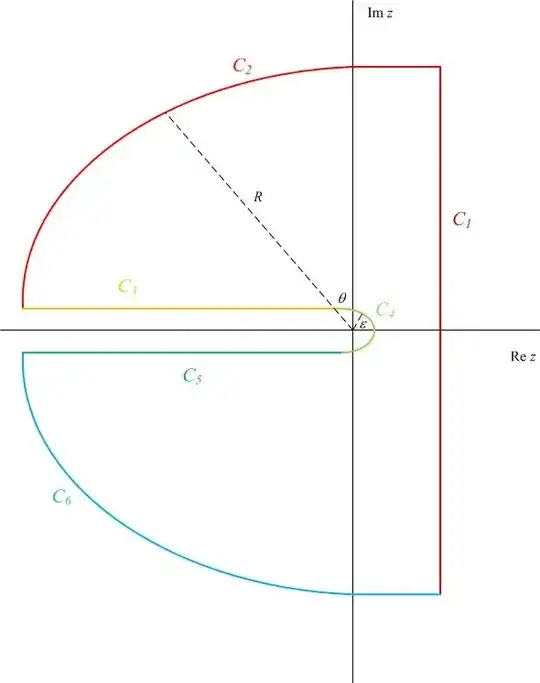I am going to derive your result by hand using Cauchy's theorem applied to a contour integral. The analysis will follow that in the solution to this problem.
Consider the following contour integral in the complex plane:
$$\oint_C dz \, \frac1{\sqrt{z}} e^{-\sqrt{a z}} \cos{\left (\sqrt{a z}\right )} \, e^{z t}$$
where $C$ is the following contour:

We will define $\text{Arg}{z} \in (-\pi,\pi]$, so the branch is the negative real axis. There are $6$ pieces to this contour, $C_k$, $k \in \{1,2,3,4,5,6\}$, as follows.
$C_1$ is the contour along the line $z \in [c-i R,c+i R]$ for some large value of $R$.
$C_2$ is the contour along a circular arc of radius $R$ from the top of $C_1$ to just above the negative real axis.
$C_3$ is the contour along a line just above the negative real axis between $[-R, -\epsilon]$ for some small $\epsilon$.
$C_4$ is the contour along a circular arc of radius $\epsilon$ about the origin.
$C_5$ is the contour along a line just below the negative real axis between $[-\epsilon,-R]$.
$C_6$ is the contour along the circular arc of radius $R$ from just below the negative real axis to the bottom of $C_1$.
We will show that the integral along $C_2$,$C_4$, and $C_6$ vanish in the limits of $R \rightarrow \infty$ and $\epsilon \rightarrow 0$.
On $C_2$, the real part of the argument of the exponential is
$$R t \cos{\theta} - \sqrt{R} \cos{\frac{\theta}{2}}$$
where $\theta \in [\pi/2,\pi)$. Clearly, $\cos{\theta} < 0$ and $\cos{\frac{\theta}{2}} > 0$, so that the integrand exponentially decays as $R \rightarrow \infty$ and therefore the integral vanishes along $C_2$.
On $C_6$, we have the same thing, but now $\theta \in (-\pi,-\pi/2]$. This means that, due to the evenness of cosine, the integrand exponentially decays again as $R \rightarrow \infty$ and therefore the integral also vanishes along $C_6$.
On $C_4$, the integral vanishes as $\epsilon$ in the limit $\epsilon \rightarrow 0$. Thus, we are left with the following by Cauchy's theorem (i.e., no poles inside $C$):
$$\left [ \int_{C_1} + \int_{C_3} + \int_{C_5}\right] dz \: \frac1{\sqrt{z}} e^{-\sqrt{a z}} \cos{\left ( \sqrt{a z} \right )} e^{z t} = 0$$
On $C_3$, we parametrize by $z=e^{i \pi} x$ and the integral along $C_3$ becomes
$$\int_{C_3} dz \: \frac1{\sqrt{z}} e^{-\sqrt{a z}} \cos{\left ( \sqrt{a z} \right )} e^{z t} = -i e^{i \pi} \int_{\infty}^0 dx \:x^{-1/2} e^{-i \sqrt{a x}} \cosh{\left ( \sqrt{a z} \right )} e^{-x t}$$
On $C_5$, however, we parametrize by $z=e^{-i \pi} x$ and the integral along $C_5$ becomes
$$\int_{C_5} dz \: \frac1{\sqrt{z}} e^{-\sqrt{a z}} \cos{\left ( \sqrt{a z} \right )} e^{z t} = i \, e^{-i \pi} \int_0^{\infty} dx \: x^{-1/2} e^{i \sqrt{a x}} \cosh{\left ( \sqrt{a z} \right )} e^{-x t}$$
Or, parametrizing the integral over $C_1$ as $z=c+i p$:
$$\int_{c-i \infty}^{c+i \infty} dp \: \frac1{\sqrt{p}} e^{-\sqrt{a p}} \cos{\left ( \sqrt{a p} \right )} e^{p t} = i 2 \int_0^{\infty} dx \: x^{-1/2} \cos{\left (\sqrt{a x}\right )} \cosh{\left ( \sqrt{a x} \right )} e^{-x t}$$
Now we may write down an expression for the inverse Laplace transform:
$$\begin{align} \mathcal{L}^{-1}\left [ \frac1{\sqrt{p}} e^{-\sqrt{a p}} \cos{\left ( \sqrt{a p} \right )} \right ] &= \frac1{i 2 \pi} \int_{c-i \infty}^{c+i \infty} dp \: \frac1{\sqrt{p}} e^{-\sqrt{a p}} \cos{\left ( \sqrt{a p} \right )} e^{p t}\\ &= \frac1{\pi} \int_0^{\infty} dx \: x^{-1/2} \cos{\left (\sqrt{a x}\right )} \cosh{\left ( \sqrt{a x} \right )} e^{-x t}\\ &= \frac1{2 \pi} \operatorname{Re}{\left [\int_{-\infty}^{\infty} dy \, e^{-t y^2} \, \left ( e^{-(1-i) \sqrt{a} y} + e^{(1+i) \sqrt{a} y} \right ) \right ]}\\ &= \frac1{2 \pi} \operatorname{Re}{\left [e^{-i a/(2 t)} \int_{-\infty}^{\infty} dy \, e^{-t \left (y + \frac{(1-i) \sqrt{a}}{2 t} \right )^2 } \\ + e^{i a/(2 t)} \int_{-\infty}^{\infty} dy \, e^{-t \left (y - \frac{(1+i) \sqrt{a}}{2 t} \right )^2 } \right ]} \\ &= \frac1{\sqrt{\pi t}} \cos{\left ( \frac{a}{2 t} \right )}\end{align} $$
as was to be shown. Note that each of the integrals could be shifted back to the origin without affecting its value.
